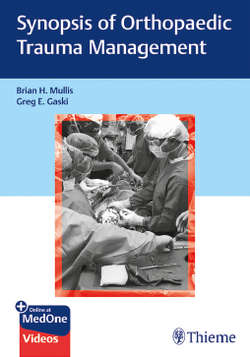Читать книгу Synopsis of Orthopaedic Trauma Management - Brian H. Mullis - Страница 14
На сайте Литреса книга снята с продажи.
II. Types of Fracture Healing—Putting it All (and the Bone) Back Together
ОглавлениеBone is one of the few tissues that will heal without a scar (i.e., bone will absolutely become bone again). It is in contrast with healing in most of other tissues where there is some component of fibrous tissue (i.e., scar) at the repair/regeneration site. Bone is composed of cells and ECM. Woven bone is immature bone with randomly organized collagen fibers. Lamellar bone is composed of parallel layers of collagen fibers. The physiology of fracture healing remains incompletely understood. However, there are two well-described pathways of fracture healing: primary and secondary.
A. Primary (direct, intramembranous): This process of fracture healing occurs when a fracture is rigidly fixed (e.g., lag screw and neutralization plate, compression plate; ▶Fig. 1.2).
1. MSCs differentiate directly into osteoblasts. Based on Perren’s strain theory, this is a low-strain environment (< 2%).
2. Cutting cones of osteoclasts followed by osteoblasts laying down osteoid which eventually mineralizes. This recreates Haversian canals/osteons directly across the fracture site.
B. Secondary (indirect, endochondral): This process of fracture healing occurs in mechanical environments with relative stability (e.g., cast, intramedullary nail [IMN], bridge plate, external fixation; ▶Fig. 1.3).
Fig. 1.2 Primary bone healing. Emanating from a Haversian canal a cutting cone is created. At the lead end of the cone are osteoclasts resorbing bone. They are followed by osteoblast that lay down osteoid. Osteoid eventually mineralizes to become new bone tissue.
Fig. 1.3 Secondary bone healing. Following fracture, an acute inflammatory response occurs including the production and release of growth factors and cytokines, and the recruitment of mesenchymal cells to differentiate into chondrocytes. A cartilaginous intermediate is formed that then becomes vascularized. Osteoblasts and osteoclasts get recruited and the cartilage intermediate becomes mineralized and ultimately bone matrix is formed. Finally, this bone is remodeled to fully restore a normal bone structure.
1. Based on Perren’s strain theory, this is a moderate-strain environment (~2–10%). The amount of strain present decreases over time as the stiffness of the tissues bridging the fracture changes.
2. Following fracture, an acute inflammatory response occurs including the production and release of growth factors and cytokines and the recruitment of mesenchymal cells to differentiate into chondrocytes. A cartilaginous intermediate is formed that then becomes vascularized. Osteoblasts and osteoclasts get recruited and the cartilage intermediate becomes mineralized and ultimately bone matrix is formed. Finally, this bone is remodeled to fully restore a normal bone structure. Classically, the process is divided into four stages:
a. Inflammatory/hematoma—inflammatory cells (e.g., macrophages, neutrophils) and platelets debride the wound and release cytokines and cell recruitment factors. Early granulation tissue forms. This stage occurs immediately and up until ~2 weeks after injury.
b. Soft callus (cartilaginous)—MSCs aggregate and differentiate into chondrocytes. An intermediate cartilage scaffold is formed bridging the fracture site. This stage occurs ~2 to 6 weeks after injury.
c. Hard callus (endochondral bone formation)—chondrocytes hypertrophy (characterized by collagen X) and intermediate cartilage scaffold is degraded by matrix metalloproteinases and ultimately calcifies. Blood vessels invade and bring cells that differentiate into osteoblasts. Woven bone is laid down. This occurs ~6 weeks till injury site bridged.
d. Remodeling—woven bone is slowly replaced by lamellar bone. Osteoblasts form new bone while osteoclasts resorb the woven bone. Restoration of bone marrow cavity starts. This occurs after hard callus has formed until bone is fully remodeled according to Wolff’s law. It can take years to complete.
These are idealized stages of secondary fracture healing that in reality occur along a continuum overlapping in time.
